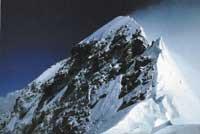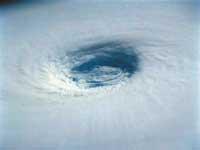There is always error

How much does my highest partner measure? He says he doesn't reach two meters. Yes, but how much? "One with ninety, almost two meters." Yes, but how much?" I have three centimeters to reach two meters."
The truth is that, in a colloquial conversation, that precision is enough; it is clear what is 1.97 meters and would not add anything to know the number of millimeters. But if my partner had participated in a biological experiment and had to measure his height, it would not be surprising that precision in millimeters was essential.
The scientific criteria for measurements are very strict. For example, the number 1.97, 1.970 and 1.9700 are not the same. The addition of zeros behind the last decimal is not a change. However, science changes a lot.
Suppose they measure their partner and that in the results report the biologists write 1,970 meters. What does that mean? This means that it measures one meter, ninety-seven centimeters and zero millimeters. Not one or two millimeters. No. One millimeter zero to ninety-seven. And if they wrote 1.97 meters in the report, they would indicate that they have not measured the millimeters. They don't know it and they surely don't want to know it.
Depends on the meter
Measuring a person's height is simple, but other measures can have many problems. Of course, the problem depends on the degree of accuracy, which is different for each measurement. How many metres does Everest have? How many millibars of atmospheric pressure are there now and here? How many tons does the elephant weigh? How many thousands of grades does titanium melt? In how many hundredths of a second did the athlete Marion Jones one hundred meters in the last race?

The example of Everest is significant. There are techniques to measure height in meters, but the most accurate are not within reach of everyone. For example, it can be accurately measured from a satellite by laser, but not anyone has the technology to do so. Triangulation is simpler, but this method does not provide accuracy in meters. Although the measurement is done very carefully, the result is never accurate because the method has its own error.
And this is concrete every time scientists write numerical results. For example, my partner's height is 1.97 meters, one centimeter. This means that the height is between 1.98-1.96, but ensures that the measurement does not present greater errors than this; moreover, with this measure the height cannot be known more exactly than this, since the method used is not able to give greater precision.
The degree of detail is thus obtained in conjunction with the result. If Everest is said to have 8,848 meters, four incidents, for example, indicate that the measurement method has a maximum error of 4 meters.
Maximum error

And at what height would my partner's head be at the top of Everest? We could measure it directly if the partner goes up there. But it is not an easy task. It is easier to calculate from the above two measures. Therefore, most of the data to be used, rather than measured, are calculated by scientists from other data. In this case, the result would be obtained by adding the two already measured heights. But be careful. This result would also have a degree of accuracy. I would have a mistake.
It can be thought that the head would be 8.849.97 meters (sum of two heights) and that the error would be one centimeter. But this is not correct. Although the height of the companion has been measured with an accuracy of centimeters, the mount has been measured with a error of four meters. Therefore, the head of the companion would be in that strip of 8,852 and 8,845 meters. It is not clear where it is exactly; the result should be 8,850 meters, but admitting a error of four meters, since in the initial measurements can no longer adjust that precision.
In the example presented here it does not make much sense to use decimals. The height of the Everest is the least accurate in both, and is in meters, so, to use the same precision, the height of the companion also requires meters. Therefore, it should be rounded to two meters in this case. And that is why it is the result of a calculation of 8,850 meters.
Rounding criteria
Why round the height of the partner to two meters? Why not roll to one meter if the number 1 appears before the coma? The reason is simple: 1.97 closer to 2 than 1. It's in sight, isn't it? And if instead of an integer a decimal is needed, once rounded the number 2.0 would be obtained, the latter zero is important because it indicates the accuracy of the first decimal.

Rounding is not always so clean, but you have to maintain the criteria of proximity. Although it may seem silly, it should be remembered that 1.51 is also closer to 2 than 1, and 1.50001. Again, when rounding it will be set to 2 (and 1.5 if a decimal is needed).
However, the 1.5 number is no closer than 2 than 1. What is done in this case? Scientists have agreed and set the criteria for these cases: rounding will be done at an even number. According to this, the number 1.5 will be rounded to 2 and not to 1, and for example the number 4.5 to 4. It is an arbitrary decision, but accepted in the scientific field.
Measurement quality
Knowing that the companion is two meters long, if he were at the top of Everest, he would see it from a height of 8,850 meters. And a 4 meter error in the measurement is supported. However, is it a good measurement? Quite concrete?
Once a result has been obtained, we must reflect. The error may be too large and the result cannot be taken into account, it may be necessary to change the measurement method and use a more accurate one. It is not an easy decision, looking at the numbers can help.
Determining the incidence of error is not sufficient for this. For example, when measuring the distance from Earth to the Moon, the error of four meters is very small, but when measuring the height of a person is very large. So where is the limit of acceptable error? What error can be taken for good?
Error can give answer. For example, if there is an error of four meters at the height of Everest, it can be analyzed by numbers. Simply calculate the percentage of the result:
(4x100)/8.848

The result of this operation, rounded to two decimals, is 0.05%. That is, the error does not reach even 5% of the measured value. Therefore, it can be given for good without problems. In general, scientists take this percentage as their criterion. In the case of Everest, therefore, a quality result will be obtained if measured by a method of four meters of error.
However, things go slowly in science and it must be borne in mind that scientists themselves can make mistakes. In fact, if we measure ten times the height of the comrades, we would not get the same results in ten. Therefore, results are not allowed once measured. The more they are done, the safer the result will be.
Heavy? It is quite heavy but necessary work. The scientist has to make the job as clean as possible, as the method he is using has a mistake in itself. Error is always. Always.





